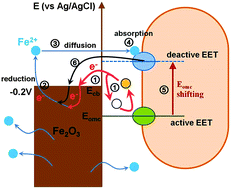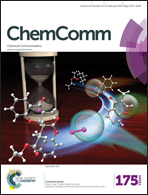Ferrous ion regulated extracellular electron transfer: towards self-suppressed microbial iron(iii) oxide reduction†
Abstract
By using an electrochemical strategy, we demonstrated that ferrous ions are capable of decreasing bacterial EET activity in a certain potential range where the conduction-band edge of natural abundant iron(III) oxides is located. It is proposed that ferrous ions enable alteration of the formal potential of outer membrane c-type cytochromes, a crucial protein involved in the EET process.


 Please wait while we load your content...
Please wait while we load your content...